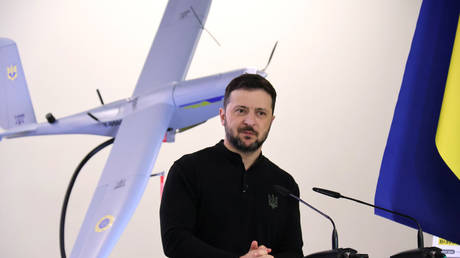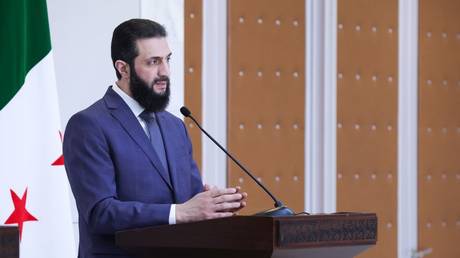A cargo airline is eyeing a revolutionary new aircraft design to handle rough flying historically handled by its specialized Boeing 737-200 fleet.
Natilus
A Canadian airline plans to expand its fleet with a futuristic “blended-wing body” aircraft.The design would be a first in commercial aviation. The manufacturer plans to also build a 200-person airliner to challenge Boeing and Airbus.
Canadian charter airline Nolinor Aviation has agreed to buy an all-new aircraft type known as a “blended-wing body” as it expands beyond its all-Boeing fleet.
The futuristic cargo plane “Kona” is being developed by California-based startup Natlius. Its design combines the fuselage and wings into one section that the company says can reduce fuel consumption by 30%.
Smaller than some other cargo-specific planes in service today, Kona would complement Nolinor’s fleet of larger Boeing 737-200 freighters when it enters service after 2028, all of which are at least 40 years old, President Marco Prud’Homme told Business Insider.
“It’ll be like opening a new horizon for us, and we can fly to more places that we couldn’t in the past,” Prud’Homme said. “For example, the 737-200 would be too much capacity for some communities, but a weekly flight with Kona would be perfect.”
He pointed to its 50% lower operating costs compared to similar plane types and its ability to reach more remote places, land on unpaved terrain, and carry more bulky cargo than competing planes.
Kona can handle rough terrain essential to rural flying
Nolinor’s main business is flying for mining companies in Northern Canada, including carrying passengers and cargo to various sites. Prud’Homme said the airline flies five or six times a day up north.
There is little infrastructure in these areas, meaning most of the runways are gravel, grass, ice, or dirt. Nolinor has historically relied on its aging 737-200 aircraft to reach these places, thanks to a special kit that can be equipped on the jetliner.
Nolinor has the largest fleet of Boeing 737-200s. The planes’ nose gear and engines are specially modified to handle unpaved runway debris.
Nolinor Aviation
Newer 737 models do not have this ability — greatly limiting Nolinor’s fleet options. However, Natlius’ Kona aircraft is being designed to tackle the job.
Natilus CEO Aleksey Matyushev told BI that Kona’s field performance is focused on gravel, dirt, and grass, but it would likely not be ice-capable.
He added that the carbon-fiber fuselage would have a special coating to protect it from gravel or other terrain being kicked up, and the propellers would be optimally located away from much debris.
While competing propeller aircraft, like the De Havilland Canada Otter or the Pilatus PC-12, can also land on unpaved runways, Prud’Homme said Kona’s engine placement was a major selling point.
Kona’s engines are mounted to the back of the aircraft instead of on the nose or sides like those of competing planes.
Natlius
“It’s a very costly operation,” he said. “When we saw their design has the engines mounted at the back of the aircraft, and basically the aircraft becomes the protection for the engines, we saw that this was a great potential for us.”
Less cargo but more market opportunities
Kona would carry about 8,500 pounds of cargo — far less than the nearly 30,000-pound carrying capability of Nolinor’s 737-200.
However, Prud’Homme said the smaller Kona’s 900-nautical-mile range and nearly 1,200 cubic feet of cargo space would open new market opportunities and is overall better performing than competing options.
He explained that one of the mining missions Nolinor is eyeing would require 5,000 to 6,000 pounds of cargo, which Kona could carry and deliver within two hours.
Kona’s fuel savings also mean it won’t need to refuel after one leg, saving time and money. Its side-loading door could create efficiency in loading and unloading.
Matyushev said Nolinor will be among the first to fly the Kona.
Natlius
Prud’Homme said the aircraft would largely carry perishable goods, but it could also carry equipment and appliances.
He added that the diamond-shaped Kona could also uniquely accommodate awkward-sized items that traditional tube-and-wing planes can’t.
“Sometimes the problem we have up north is that we bulk out on volume before payload because some of those items are not very heavy, but they take a lot of space,” Prud’Homme said. “Kona has a lot of volume capacity, so that’s interesting for us.”
The competing ATR 72-600 freighter, for example, can carry more than twice the weight of Kona but has 150 fewer cubic feet of volume. The Cessna Sky Courier falls short of Kona in both metrics.
Natlius wants to eventually compete with Boeing and Airbus
Beyond Kona, Natilus is also looking to create a 200-passenger BWB airliner named Horizon to challenge Boeing and Airbus.
Matyushev previously told BI that the plane isn’t expected to hit the market until the early 2030s. But it’s expected to fill a perceived market gap that Natilus believes Boeing and Airbus cannot handle.
Prud’Homme said Horizon, with its 50% better fuel efficiency than traditional jetliners, could eventually replace Nolinor’s 737 aircraft.
Natilus thinks its blended-wing Horizon jet will be the future of commercial aviation.
Natilus
Matyushev said Natlius is in talks with various companies for both of its planned planes.
The company has already secured purchase agreements for Kona from the US cargo airline Ameriflight, a partner of FedEx, DHL, and UPS — and it expects to gain further cargo business in remote places in Alaska, Africa, and India.
“The only way to really connect these mines or remote communities is through air travel,” Matyushev said. “Of course, freight is a huge part of that whole equation.”





+ There are no comments
Add yours